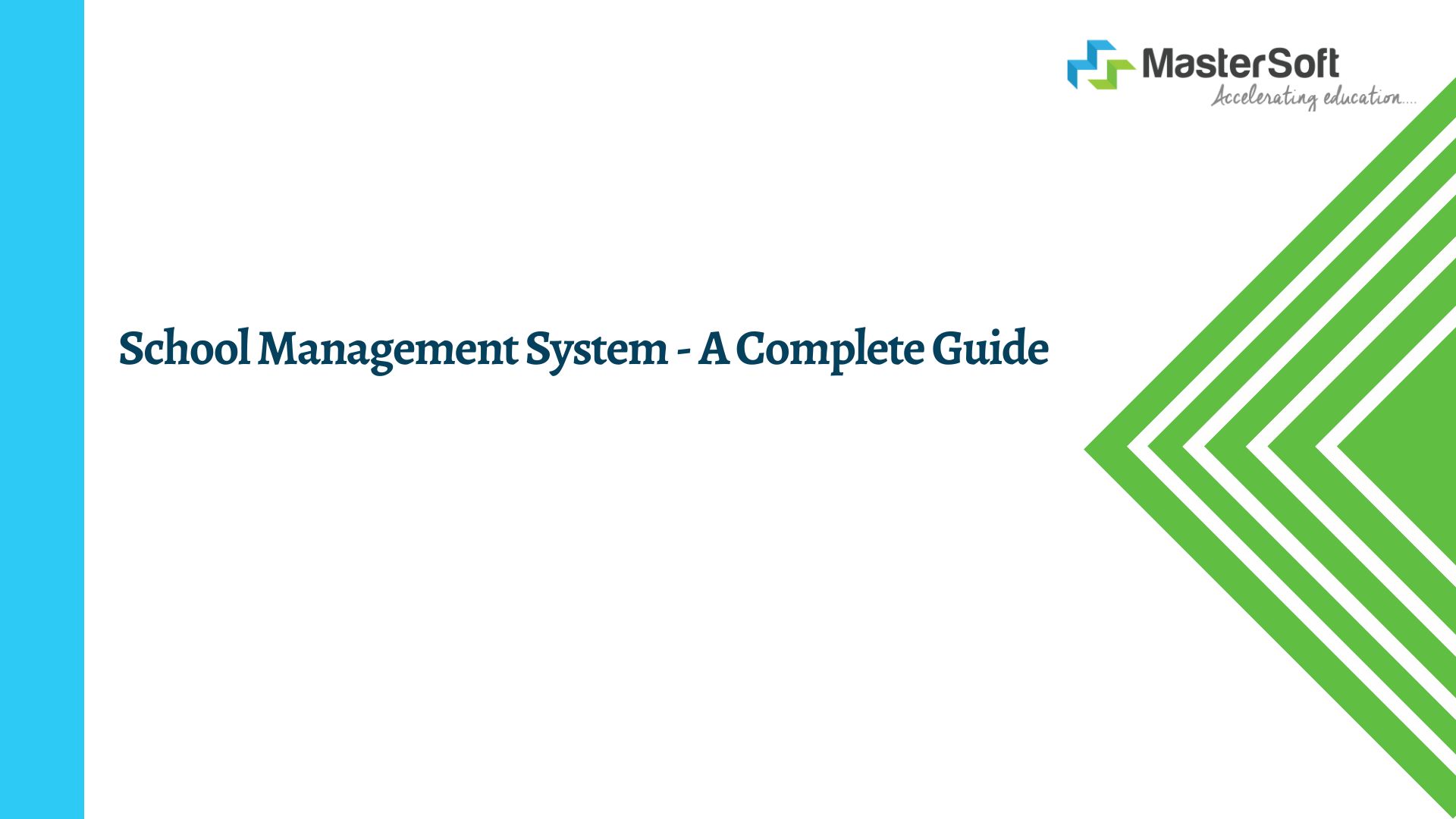School Management Software – A Complete Guide
Education is subject to gradual evolution that reflects the socio-cultural, political, economic, and scientific developments. Therefore, institutes must work towards updating their curriculum and methodologies and improving their teaching and learning systems.
Imagine the time and effort it takes to shift from the old mechanisms to new ones; however, with school management software (SMS), you don’t have to worry about transitional or implementation delays.
What is School Management Software?
School management software is a system or a platform that facilitates the effective functioning of an institution through the digitalization of primary duties or activities. Furthermore, the software enables institute members to complete specific tasks at a fraction of the time taken to do them manually.
Therefore, the automation of various administrative and academic operations is a prominent characteristic feature offered by the software. What’s more, it is an excellent school software with multipurpose benefits, helping all stakeholders complete their tasks seamlessly.
Key Features of School Management System
-
Attendance Management System
The first thing that teachers conduct before the class begins is the attendance recording, which usually takes some time to complete. The traditional way of taking attendance and maintaining the registers is time-consuming.
At the same time, at the end of each month, teachers must tally the number of days individual students were absent or present and prepare a cumulative report. On the contrary, they will not have to do any of the above while using SMS.
Instead, they can use the software to automate the entire attendance-taking, maintenance and tracking process. As a result, they will have additional time to spend on teaching and learning processes.
-
Student Information System
An education institute has to deal with a lot of data, especially related to students’ academic processes, including admission, examination, and online/offline classes. For the longest time, they have been processing all documents conventionally through paper-based documents, files and folders.
No wonder they could not help but feel exhausted, burdened and overwhelmed; thankfully, they no longer need to rely on the old methods, instead opt for the student management system (SIS). The system is a top-notch software that streamlines all student-related data and details.
-
It provides a comprehensive platform, enabling school or college admin to store and organise students’ personal information, attendance record and academic history.
-
It provides an easy-to-use mechanism to monitor student progress and identify at-risk students through the attendance tracking system.
-
Fees Management System
Gone are the days when parents had to rush to the schools and submit the fees within the stipulated time to avoid late fees. Similarly, students do not need to stand in a long queue to pay their exams or monthly fees anymore.
Most schools and colleges have availed the facility of online payment of fees through modern tools like the school ERP. Furthermore, the integration of ERP software with SMS guarantees a safe and secure online environment for making online transactions.
Additionally, admin and students can check the payment tracking and collect fee receipts. Also, the staff can check pending fees, generate customised reports, and send alerts to respective parents, informing them about the due fees.
-
Communication Tools
Conducting impromptu meetings with staff or faculty members might not always be feasible, and that is where institutes can use communication platforms. In fact, they can use the in-built communication channels to send updates and alerts to team members.
Furthermore, these tools are integral to maintaining smooth communication between different departments, helping to avoid confusion or delays. Likewise, they are instrumental in updating parents and students regarding various institute-related news and events, such as parent-teacher meetings.
-
Examination and Result Management
Schools do not need to rely on conventional ways of organising exams anymore, which usually takes a long time. Instead, they can automate all pre- and post-examination activities using the student management system.
For example, the software helps execute online exams seamlessly; teachers can create different exam questionnaires, including descriptive and objective types. Also, the examination evaluation is just as easy, not requiring teachers to spend hours checking the answer sheets.
The software allows teachers to generate assessment reports and track their academic progress. Also, it helps in figuring out the areas wherein students need improvement.
-
Staff and Teacher Management
School management software goes beyond streamlining student-related activities; it handles various activities of different departments. It ensures the workflow of the staff and faculty, helping to keep track of the login and log-out timings.
Besides, an in-built automated attendance system helps to monitor their regularity and absence; the payroll module is integrated into the system helps to process their payment accordingly. The software also generates salary receipts and sends them to the employees.
Parent Portal
The involvement of parents in their children’s education journey is beneficial for ensuring a conducive environment at home. But sometimes, students may not inform their parents about the recent ongoings in school/college.
Therefore, the in-built parent portal enables parents to monitor the school activity, reports, academic progress, disciplinary actions taken by the teacher, etc. In addition, they can check timely updates on events and meetings through the portal and reach out to particular teachers.
How to Choose the Best School Management System?
While choosing the best SMS, one needs to find the answer to what is school management software and how it can serve their institute. They will find the answer by looking at a few vital factors:
-
Each school or college has individual requirements, so one needs to find their institute’s specific challenges and how the software can address and solve them.
-
The software must be scalable and have in-built features to enable integration with existing and other systems and tools.
-
It must have an easy-to-use interface, allowing stakeholders to navigate the system without issues.
-
High-security measures and facilities are a must to protect sensitive data and information from data leakage or other cybercrime.
-
While selecting a school management software, one must opt for a company or vendor that provides good after-sales services, including customer support and compulsory staff training.
To Wrap It Up,
School management software is an essential educational technology tool that automates administrative activities and streamlines institutional operations. It is the best solution for schools and colleges who want to maintain workflow and increase productivity.






